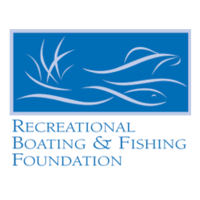 The national trend in fishing participation shows an increase in license sales during recent years, but not every state has shared in this growth. Some states have grown sportfishing participation at a rate that outpaces population growth, while other states have struggled to increase fishing participation. While there are many different factors that affect a state’s fishing participation rate, there are common factors for growth shared by many states.
The national trend in fishing participation shows an increase in license sales during recent years, but not every state has shared in this growth. Some states have grown sportfishing participation at a rate that outpaces population growth, while other states have struggled to increase fishing participation. While there are many different factors that affect a state’s fishing participation rate, there are common factors for growth shared by many states.
In a recent project for the Recreational Boating and Fishing Foundation (RBFF), Southwick Associates employed multivariate approaches for 12 states to identify which factors had the greatest positive and negative effects on fishing participation rates over a 25-year period. By determining which factors drive increases and decreases across states and then identifying those that can be influenced by state recruitment, retention and reactivation (R3) efforts, states can improve R3 approaches and strategies resulting in greater license sales and participation.
Most states that have increased fishing participation rates over the past 10 years have created wide-reaching R3 programs, often with coordinated marketing and communications strategies. In addition to R3 programs of this nature, implementing multi-year licenses and licenses valid for one year from the date of purchase positively affected every state in which they were implemented, including states with overall declining trends. Although not all findings are statistically significant, these factors analyzed here have a positive impact on participation rates, showing that there are actions that can be taken by any state in order to positively affect license sales and participation rates even in states with overall declining participation.
Ramping up large scale R3 efforts, simplifying license structures, and offering multi-year and 365-day licenses would likely increase fishing participation rates in many states. Responsive programming that addresses the needs of a state, such as meeting an urbanizing population with urban fishing initiatives, will have the greatest impact. While there are no guarantees that all of these will work in every state, these insights will help steer states’ efforts and foster the growth of sportfishing participation.
“It’s clear that ramping up R3 efforts, among other things, has a direct, positive impact on fishing license sales,” said RBFF President & CEO Frank Peterson. “This research provides support for the critical R3 work we are encouraging our state and federal agency and industry partners to undertake.”
These findings show that there are specific actions that state agencies can make to positively affect license sales and participation rates, even in states with declining participation.
By determining which factors drive increases and decreases across states and then identifying those that can be influenced by state recruitment, retention and reactivation (R3) efforts, we can improve R3 approaches and strategies resulting in greater license sales and participation.
The full report is available online at www.RBFF.org.
